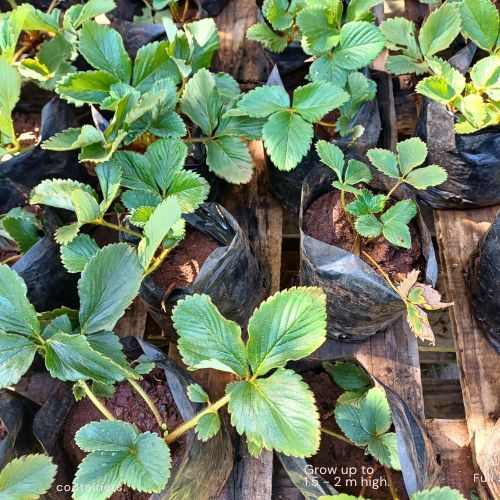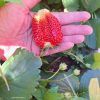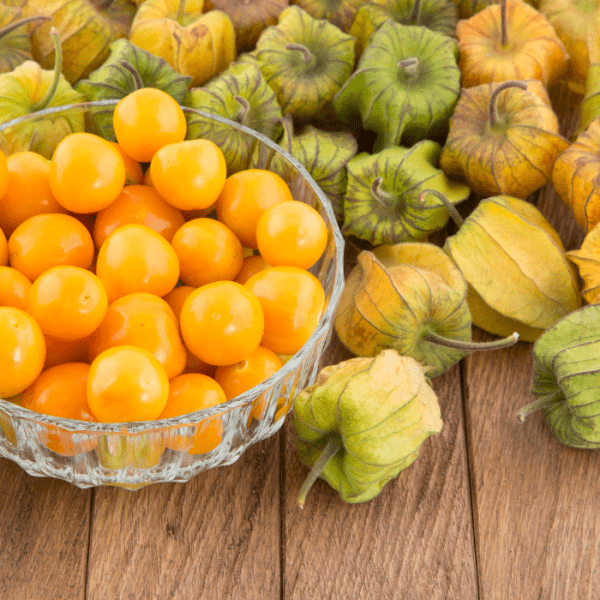Position:
Eversweet strawberries thrive in full sunlight and well-drained, fertile soil. They are relatively easy to grow and cultivate in garden beds, containers, or hanging baskets. Adequate moisture and regular fertilisation can help promote healthy growth and fruit production.
Plant about 30 centimetres apart. The rows should be between 90 centimetres and 1.5 metres apart. This spacing allows the plants enough room to spread and produce runners without overcrowding, which can lead to competition for nutrients and increased susceptibility to disease. Additionally, proper spacing promotes good air circulation around the plants, reducing the risk of fungal infections.
DO NOT bury the crown when planting. Plant to the same level as in the bag.
Soil
Strawberries enjoy well-draining loose soil. Sandy, loamy soils are ideal, while clay is not a good choice. This loose soil allows water to run through, feeding the plant without waterlogging the roots. pH 5.3 – 6. Add acidity to the soil for healthy plants and berries.
Size
Strawberry plants grow to a height of about 30 centimetres and have a spread of between 60 and 90 centimetres. Eversweet strawberries produce medium-sized, bright red berries and are very sweet.
Mulch
Use a light mulch or organic matter around your plants to prevent too much water from evaporating from the soil. This also keeps weeds at bay, to an extent. Pine Bark Mulch, hay, and wood chips work well, and is especially important to protect your plants in the chilly winter months. In spring and summer the mulch will keep your new strawberries of the soil.
Watering
Keep the strawberry beds relatively moist, but be careful not to over-water them. Don’t allow the plants to be waterlogged. If your plant isn’t yet established, a more regular watering may be required for a short time.
Fertilising
Use our slow-release nitrogen-rich all plant fertiliser. Apply 1 teaspoon every 4-5 months. If the plant is flowering, don’t use a fertiliser.
Pruning
In the first year of the plant’s growth, you can pinch the flowers off to help the plant to focus its resources on feeding a thick stem. Once your plant is established, it should only be pruned mid-winter. At any other time of year, you can remove dead or diseased leaves, especially from plants that aren’t thriving.
Pests and Diseases
Like other strawberry varieties, Eversweet strawberries may encounter certain pests and diseases, including aphids, slugs, snails, and fungal infections such as powdery mildew and grey mold. However, with proper sanitation, pest management practices (Effective Microorganisms (EM Control), and disease prevention measures, you can rest assured that these issues can be minimized, ensuring the health and productivity of your plants.
Harvesting
Eversweet strawberries are ready for harvest when the fruits are fully ripe and have developed a deep red colour. It’s best to pick them in the morning when the temperatures are cooler and the fruits are firm. Harvesting carefully to avoid damaging the delicate berries.
Propagate using runners. Simply root them in soil or containers to establish new plants. It’s essential to plant strawberry runners when the soil is moist and the weather is relatively cool. This helps minimize transplant shock and promotes healthy establishment. Make sure to choose a sunny location with well-drained soil for planting.










